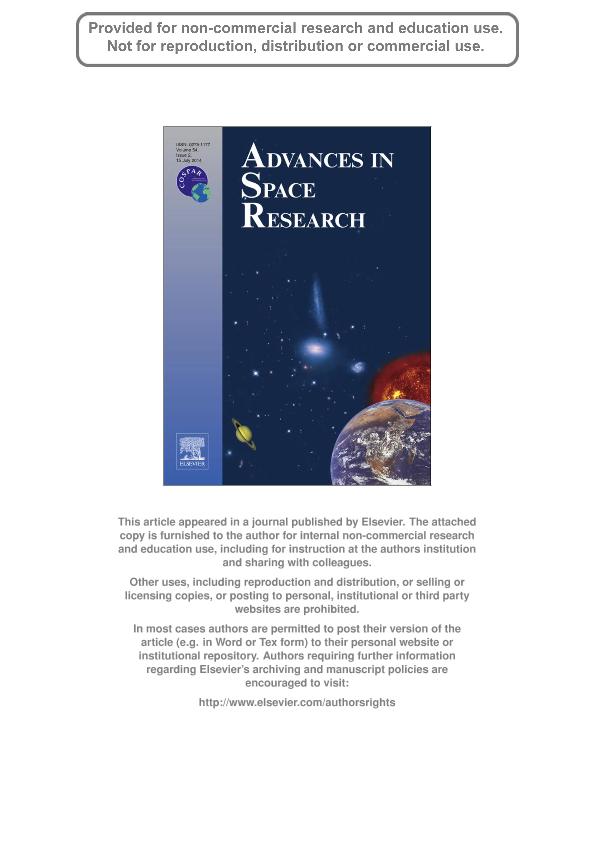Artículo
Quasi-biennial oscillation in GPS VTEC measurements
Fecha de publicación:
07/2014
Editorial:
Elsevier
Revista:
Advances in Space Research
ISSN:
0273-1177
Idioma:
Inglés
Tipo de recurso:
Artículo publicado
Clasificación temática:
Resumen
The quasi-biennial oscillation, QBO, a well known periodicity in the equatorial stratospheric zonal winds, is also found in ionospheric parameters and in solar and geomagnetic activity indices. Many authors speculated about the link between the QBO in solar and geomagnetic activity and the QBO in atmospheric parameters. In this work we analyze the presence of the QBO in the ionosphere using the Vertical Total Electron Content (VTEC) values obtained from Global Navigation Satellite System (GNSS) measurements during the period 1999?2012. In particular, we used IONEX files, i.e. the International GNSS Service (IGS) ionospheric products. IONEX provide VTEC values around the world at 2-h intervals. From these data we compute global and zonal averages of VTEC at different local times at mid and equatorial geomagnetic latitudes. VTEC and Extreme Ultra Violet (EUV) solar flux time series are analyzed using a wavelet multi resolution analysis. In all cases the QBO is detected among other expected periodicities. Since the main source of variation of free electrons in the ionospheric F2 region, where the maximum concentration occurs, is solar EUV radiation, we conclude that the most important cause attributable to QBO in the ionosphere is the quasi-biennial variability of EUV solar flux. Both QBOs are observed to vary in phase. The percentage of the total signal of the ionospheric QBO at the local times of the maximum photoionization is around 15% independent of magnetic latitude while the respective percentage of the total energy for the EUV solar flux is about 18%.
Palabras clave:
Quasi Biennial Oscillation
,
Wavelet
,
Global Igs Vtec Maps
Archivos asociados
Licencia
Identificadores
Colecciones
Articulos(CCT - LA PLATA)
Articulos de CTRO.CIENTIFICO TECNOL.CONICET - LA PLATA
Articulos de CTRO.CIENTIFICO TECNOL.CONICET - LA PLATA
Articulos(CCT - NOA SUR)
Articulos de CTRO.CIENTIFICO TECNOL.CONICET - NOA SUR
Articulos de CTRO.CIENTIFICO TECNOL.CONICET - NOA SUR
Citación
Elias, Ana Georgina; Meza, Amalia Margarita; Fernandez, Laura Isabel; Quasi-biennial oscillation in GPS VTEC measurements; Elsevier; Advances in Space Research; 54; 2; 7-2014; 161-167
Compartir
Altmétricas




